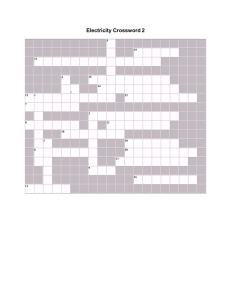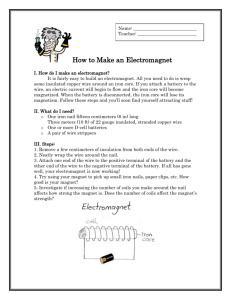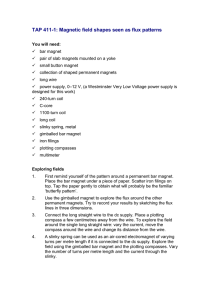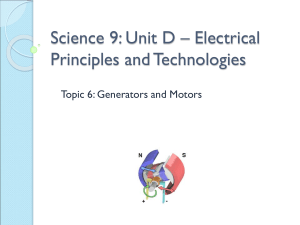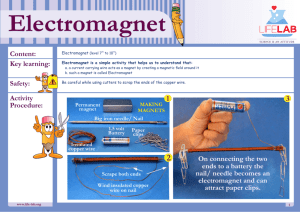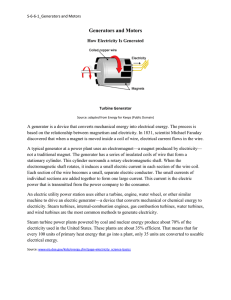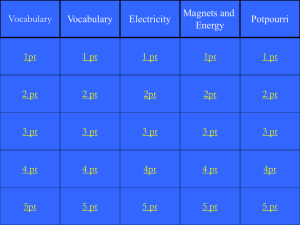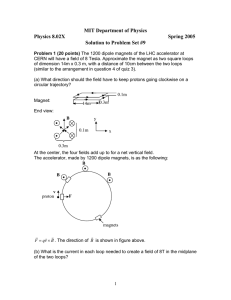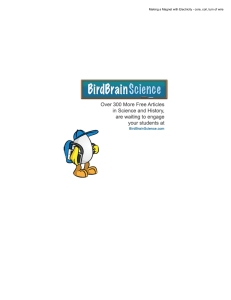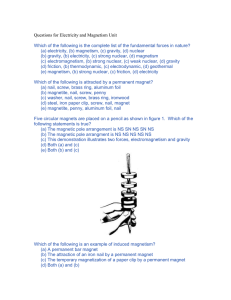• Lesson Title and Identifier: Title: Astronomy and Me: Electromagnet
advertisement
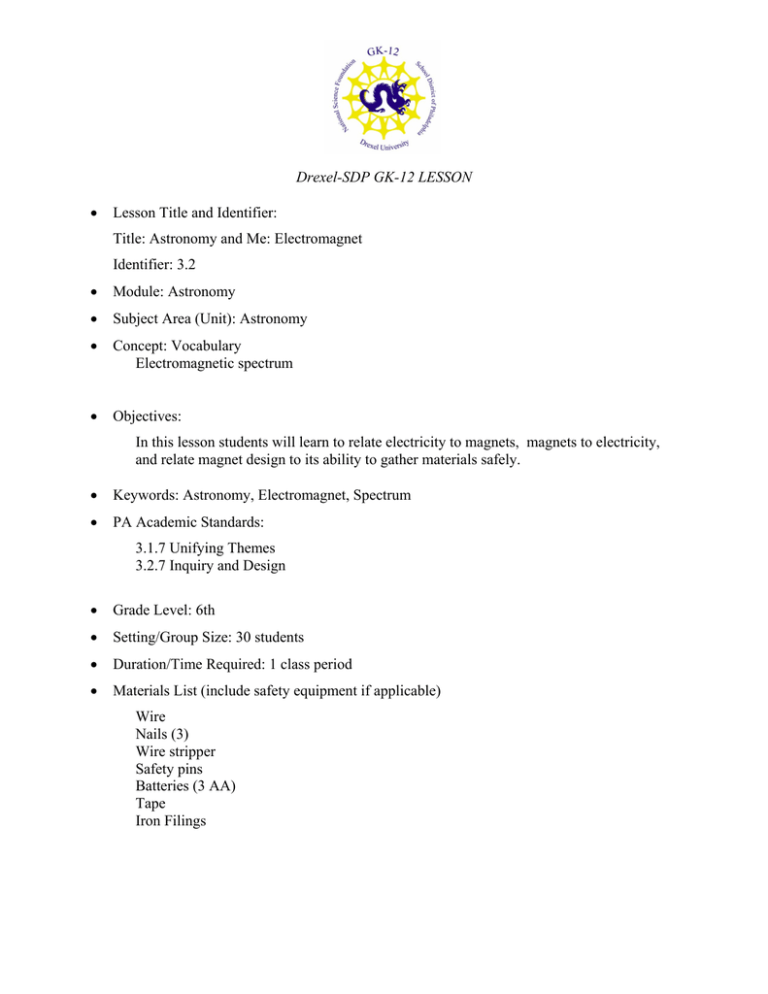
Drexel-SDP GK-12 LESSON • Lesson Title and Identifier: Title: Astronomy and Me: Electromagnet Identifier: 3.2 • Module: Astronomy • Subject Area (Unit): Astronomy • Concept: Vocabulary Electromagnetic spectrum • Objectives: In this lesson students will learn to relate electricity to magnets, magnets to electricity, and relate magnet design to its ability to gather materials safely. • Keywords: Astronomy, Electromagnet, Spectrum • PA Academic Standards: 3.1.7 Unifying Themes 3.2.7 Inquiry and Design • Grade Level: 6th • Setting/Group Size: 30 students • Duration/Time Required: 1 class period • Materials List (include safety equipment if applicable) Wire Nails (3) Wire stripper Safety pins Batteries (3 AA) Tape Iron Filings • Methods and Procedure: Step 1: Review the term electromagnetic spectrum. Ask the class to relate electricity to magnetism? Write their answers on the board. Step 2: Distribute the iron fillings evenly. Cover the filings with a transparency. This will allow the movements of the iron filings to remain visible. Step 3: Place the magnet on the transparency. What formations form at the north and south poles of the magnets? Relate this to the waves we saw in the cup with water. (Formation shape/How it radiates in all directions.) Also point out that the magnet affects materials. Step 4: Have the students list what types of materials allow electricity to flow? Can anyone see a connection? Explain that electricity can be used to create a magnetic field and a magnetic field can be used to create electricity. Step 5: Have at few electromagnets set up. (The magnets are created by wrapping a wire around a nail. For all magnets use the same battery and wire type. Alter the number of times the wire wraps around the nail and the nail. ) Step 6: Test each electromagnet. Record the how many pins a magnet could pick up. Nail Material Nail Length No. of Loops No. of Pins Magnet 1 Magnet 2 Magnet 3 Magnet 4 Step 7: In groups have the students design an electromagnet. They must defend their design based on what they observed. (If time permits, have the students build and test their designs.) What evidence do students collect? How do students present evidence? What conclusions are drawn from the evidence? Include example of data sheets • Assessment: Students will be evaluated on a scale from 0 to 4 on: ______________ ______________ ______________ ______________ Participation Task Completion Presentation Quality of Analysis • Authors: Connie Gomez, Dara Kusic, Donna Barreca, Pat Wilkes

